35 Flavorful Traditional Northern Indian Vegetarian Dishes
Northern Indian vegetarian cuisine represents a vibrant tapestry of flavors, textures, and culinary traditions that have evolved over centuries.
Regional ingredients and cooking techniques combine to create meals bursting with aromatic spices and rich cultural significance.
Talented home cooks and professional chefs alike transform simple vegetables and legumes into extraordinary gastronomic experiences.
Complex layering of spices transforms ordinary ingredients into extraordinary dishes that delight the senses and nourish the body.
These recipes reflect generations of cooking wisdom passed through families and communities, preserving cultural heritage with each carefully prepared meal.
Nutritious and satisfying, these vegetarian dishes showcase the incredible diversity of northern Indian cooking traditions.
The depth of flavor and intricate preparation methods demonstrate remarkable culinary sophistication: Here are 35 traditional northern Indian vegetarian dishes that will tantalize your palate:
Traditional Northern Indian Vegetarian Dishes to Savor
Rich spices and colorful vegetables bring northern India’s vegetarian classics to life. Every plate is a tribute to warmth, tradition, and community.
Dal Tadka
Dal tadka erupts with explosive Indian flavors, blending split yellow pigeon peas into a spice-infused comfort dish from northern India's culinary landscape.
Ghee-sizzled spices like asafoetida, chili peppers, and garlic create a dramatic tempering technique that transforms simple legumes into a complex meal.
Toor dal forms the hearty base, simmered with ginger, onions, and tomatoes to develop rich, multilayered taste profiles.
Garam masala, cumin, coriander, and turmeric weave intricate seasoning dimensions through each spoonful.
Fenugreek leaves add subtle earthy undertones to the robust mixture.
Coriander leaf garnishes provide fresh, bright finishing notes to the dish.
Jeera rice and warm roti complete this quintessential North Indian dining experience.
Shahi Paneer
Shahi paneer reigns supreme as a luxurious vegetarian curry featuring soft, creamy cheese swimming in a decadent tomato-cream sauce rooted in Moghul royal kitchens.
Cashews and aromatic spices transform simple paneer into an elegant dish celebrated during festive gatherings across India.
Onion and tomato form the vibrant base that elevates this vegetarian delicacy to spectacular heights.
Authentic preparations blend ground cashews with cream to create a silky, rich texture.
Warm Indian breads like naan or roti traditionally accompany this sumptuous meal.
Coriander leaves add fresh garnish and bright color to the dish.
Nutritional value combines with complex flavors that delight vegetarian and meat-eating diners.
Malai Kofta
Malai kofta stands out as a luxurious North Indian delicacy featuring golden-brown potato and paneer dumplings swimming in a velvety, spiced cream sauce.
Originating from Mughal royal kitchens, this vegetarian marvel mimics traditional meatball curries with its rich, indulgent profile.
Medieval Indian cooks crafted these deep-fried koftas as a sophisticated alternative to meat-based dishes, blending Turkish and Persian culinary influences.
Typically prepared in a special wok called a kadai, the recipe transforms humble ingredients into an elegant celebration dish.
Wedding feasts and festive gatherings showcase malai kofta as a centerpiece of communal dining.
Soft potato and paneer balls absorb complex spices and creamy textures, creating a mouthwatering experience.
Palak Paneer
Punjabi spinach curry blends creamy paneer cheese with a luscious green sauce packed with aromatic spices, creating a protein-rich vegetarian masterpiece from Northern India.
Garam masala, garlic, and tomatoes elevate the pureed spinach into a vibrant, silky mixture that coats tender cheese cubes.
Nutritional powerhouse spinach provides essential vitamins and minerals to this comforting meal.
You can enjoy palak paneer with steamed rice or traditional naan bread at any time of day.
Punjabi home kitchens originally crafted this simple yet sophisticated recipe.
Hindi language reveals the ingredients: "palak" means spinach while "paneer" describes the soft, fresh cheese.
Restaurants and families throughout India celebrate this beloved vegetarian classic.
Chana Masala
Bursting with complex spices and tangy flavors, chana masala emerges as North India's quintessential vegetarian curry that captivates taste buds across South Asian cuisine.
Chickpeas simmered in a rich blend of aromatic herbs create a hearty dish enjoyed from railway platforms to festive ceremonies in India and Pakistan.
Yogurt or sour cream often tops the dish, adding a cool contrast to its warm spice profile.
Garam masala, cumin, and tomato form the core flavor foundation of this beloved curry.
Dal Makhani
Dal makhani reigns supreme as a luxurious North Indian comfort dish bursting with creamy, slow-cooked black lentils and kidney beans simmered in a decadent tomato-based sauce.
Punjabi kitchens first crafted this iconic recipe, transforming humble ingredients into a rich culinary masterpiece through patient, low-heat cooking.
Generous amounts of ghee and butter create its signature silky texture, while ginger-garlic paste and robust spices deliver complex, warming flavors.
Urad and rajma beans form the protein-packed foundation, absorbing the intensely aromatic sauce during hours of gentle simmering.
Restaurants across India and international markets now feature this beloved dish as a cornerstone of North Indian cuisine.
Creamy, spiced, and intensely satisfying, dal makhani represents comfort in every deeply flavored spoonful.
Aloo Gobi
Simmering with golden turmeric and aromatic spices, aloo gobi stands as a beloved vegetarian comfort dish from Northern India that transforms humble potatoes and cauliflower into a flavor-packed masterpiece.
Bold Indian spices like cumin, ginger, and coriander infuse each tender vegetable bite with complex warmth and depth.
Traditionally prepared without added liquid, this dry curry lets natural vegetable juices and spices create an intensely fragrant experience.
Garlic and red pepper add subtle heat and complexity to the mixture.
Families often serve this vibrant dish alongside fluffy rice or warm naan bread.
Fresh coriander leaves and a zingy squeeze of lime brighten the final presentation.
Nepal and Pakistan also embrace this classic Indian vegetarian staple, celebrating its simple yet profound flavor profile.
Paneer Tikka
Paneer tikka bursts with smoky flavors from traditional tandoor-style grilling, combining marinated cheese and vegetables into a mouthwatering North Indian delicacy.
Crumbly paneer cheese anchors this vegetarian sensation, offering soft texture and rich protein.
Skewered chunks of paneer intermingle with bright tomatoes, crisp onions, and spicy peppers during high-heat cooking.
Skilled cooks season the grilled mixture with zesty lemon juice and spicy chaat masala for complex taste profiles.
Mint chutney often accompanies the dish, providing cool contrast to its warm spices.
Restaurant menus frequently feature exciting variations like paneer tikka masala with spicy gravy.
Some versions transform the classic recipe into portable rolls wrapped in soft Indian bread.
Rajma
Rajma transforms red kidney beans into a spice-packed culinary masterpiece that originated in North India's vibrant cuisine.
Mexican migrants first introduced these beans to India, sparking a revolutionary cooking tradition in Punjab and surrounding regions.
Punjabi kitchens perfected the recipe by simmering beans in a complex, aromatic gravy loaded with carefully selected spices.
Families traditionally serve rajma alongside steamed rice or warm roti during festive gatherings and special meals.
Nutritional benefits complement the dish's rich, deeply satisfying flavor profile that has captivated generations.
Vegetarian diners particularly cherish rajma for its protein-rich ingredients and comfort food qualities.
Generations have embraced this iconic dish as a symbol of North Indian home cooking and cultural heritage.
Dahi Vada
Dahi vada captures North India's street food magic with crispy lentil fritters swimming in cool, creamy yogurt, creating a perfect temperature contrast that delights taste buds.
Spice blends like chili, cumin, and coriander transform these deep-fried vadas into a flavor explosion that tingles every sense.
Festive occasions like weddings often feature this beloved snack, where guests eagerly anticipate its refreshing qualities.
Soft vadas absorb thick yogurt, creating a melt-in-your-mouth texture that balances crispy exterior with smooth interior.
Tangy chutneys add extra zest to this irresistible dish, enhancing its complex flavor profile.
Vegetarian-friendly ingredients make dahi vada accessible to many dietary preferences.
Mattar Paneer
Mattar paneer bursts with creamy paneer cheese and tender green peas swimming in a spicy tomato sauce that captures North Indian culinary magic.
Punjabi kitchens perfected this vegetarian masterpiece that quickly spread across India's diverse regions.
Garam masala transforms the sauce into a complex flavor explosion that tingles taste buds.
Green peas add sweet bursts of freshness to the rich, warm mixture.
Restaurants and families serve this iconic dish alongside fluffy rice or traditional flatbreads like naan and roti.
Vegetarians celebrate its protein-packed ingredients and deep, comforting flavors.
Punjabi cuisine shines through this simple yet extraordinary vegetarian staple that connects generations.
Rajma Chawal
Rajma chawal stands out as a protein-packed North Indian comfort food blending spicy red kidney beans with steamed white rice.
Red kidney beans simmer in a rich tomato-based gravy infused with aromatic spices like cumin, ginger, and garam masala.
Punjabi households cherish this vegetarian staple as a satisfying one-pot meal that delivers robust flavors and nutritional balance.
Traditionally prepared with slow-cooked onions and fresh tomato puree, rajma chawal offers a creamy texture and deep, warming taste.
Families across India enjoy this dish as a lunch or dinner option that provides complete protein and hearty nutrition.
Nutritionists praise the meal for its high fiber and protein content from beans and rice.
Vegetarians especially love this simple yet flavorful combination that requires minimal ingredients and preparation time.
Aloo Matar
Hearty North Indian comfort food, aloo matar brings together golden potatoes and vibrant green peas simmered in a rich, spice-laden tomato sauce that dances with robust flavors of garlic, ginger, and cumin.
Originating in Punjab, this vegetarian staple transforms simple ingredients into a soul-warming meal packed with aromatic depth.
Traditionally served alongside warm roti or fluffy naan, the dish offers a perfect balance of textures and tastes.
Families across India cherish this one-pot wonder for its simplicity and satisfying nature.
Protein-rich and vegetarian-friendly, aloo matar provides a nutritious option for everyday dining.
Palak Dal
Palak dal bursts with nutritious green spinach blended smoothly into creamy lentils, creating a comforting Indian vegetarian staple that packs incredible flavor and health benefits.
North Indian kitchens transform yellow or red lentils by simmering them with vibrant spinach leaves and aromatic spices like cumin seeds, ginger, and turmeric.
Ghee adds rich depth to the dish, while tomatoes contribute tangy undertones that balance the earthy spinach.
Chili peppers introduce a gentle heat that lingers on your palate, making each spoonful exciting and complex.
Lemon juice or amchur (dry mango powder) brightens the entire preparation with a subtle citrusy note.
Protein-rich lentils provide substantial nutrition, ensuring the dish feels satisfying and complete.
Every serving promises a warm, nourishing experience that connects you directly to traditional Indian home cooking.
Gobi Matar
Gobi matar bursts with North Indian culinary magic, transforming humble cauliflower and green peas into a spice-laden symphony of flavors.
Turmeric and red chili powder dance through the stir-fried vegetables, creating a vibrant dish that tingles your taste buds.
Ginger-garlic paste infuses deep aromatic notes into each tender bite of cauliflower.
Chopped onions add subtle sweetness and complexity to the mix.
Fresh coriander leaves provide a bright, herbal finish to the plate.
Lemon juice adds a tangy brightness that cuts through the rich spices.
Vegetable oil helps caramelize the ingredients, ensuring a perfect golden-brown texture.
Served piping hot, this simple yet spectacular dish represents the heart of home-style Indian cooking.
Dum Aloo
Kashmiri dum aloo revolutionizes potato dishes with its slow-cooked, spice-infused masala that transforms simple ingredients into a mouthwatering culinary experience.
Prepared in a traditional earthenware vessel called handi, this dish simmers potatoes in a rich tomato and onion sauce until each bite bursts with intense flavors.
Authentic preparation demands careful technique, requiring boiling and frying potatoes to perfection while balancing complex spice combinations.
Kashmir's signature recipe takes considerable time and patience to develop its deep, layered taste profile.
Slow cooking ensures potatoes absorb every nuanced spice, creating a tender and succulent texture.
The dish's name combines "alu" meaning potato and "dum" signifying steam or warm breath.
Western food lovers increasingly appreciate this aromatic and hearty potato curry as a quintessential example of Indian regional cuisine.
Baingan Bharta
Smoky grilled eggplant transforms into a mouthwatering North Indian delicacy that captures taste buds with its intense roasted flavor and rustic charm.
Punjabi kitchens traditionally prepare baingan bharta by charring whole eggplants over open flames until skin turns black and flesh becomes soft and smoky.
Roasted eggplant gets mashed and mixed with sautéed onions, green chilies, garlic, and aromatic spices like cumin and turmeric.
Mustard oil adds a distinctive pungent kick that elevates the dish's complex profile.
Fresh cilantro garnishes the bharta, providing a bright herbal note and additional texture.
Vegetarian home cooks often serve this dish with warm rotis or steamed basmati rice.
Sarson Ka Saag
Sarson da saag explodes with rich, earthy flavors from slow-simmered mustard greens, spinach, and aromatic spices that create a creamy, comforting Punjabi vegetarian masterpiece.
Punjab kitchens traditionally transform these robust greens into a velvety blend simmered gently until reaching a luxurious texture.
Fried onions and fresh homemade butter crown the dish in its native region, adding depth and richness.
Green chillies, fenugreek, ginger, and salt intensify the complex flavor profile.
Broccoli, radish, and turnip sometimes join the mix to balance the greens' sharp bite.
Mustard leaves provide a distinctive pepperiness that distinguishes this beloved comfort food.
Served alongside makki di roti, this hearty dish represents North Indian culinary traditions.
Matar Pulao
Matar pulao bursts with aromatic Punjabi flavors, blending tender green peas and fragrant basmati rice into a spice-infused masterpiece.
Punjabi kitchens elevate this classic dish through careful layering of warming spices like cinnamon, cumin, and cardamom.
Ghee sizzles as whole spices dance and release their complex aromatics before green peas join the flavorful mix.
Carefully selected spices create a rich, golden-hued rice dish that speaks to generations of North Indian culinary tradition.
Basmati grains absorb the intense seasonings, creating a deeply satisfying one-pot meal.
Each forkful carries the essence of Punjab's agricultural heritage and regional cooking techniques.
Gently stir-fried ingredients ensure every grain becomes perfectly coated with spice and texture.
Families gather around steaming plates of this comforting rice preparation, celebrating simple yet profound flavors.
Aloo Methi
Aloo methi burst with earthy flavors from fenugreek leaves and potatoes, creating a rustic North Indian vegetarian side dish packed with aromatic spices.
Cumin, coriander, and turmeric infuse the potatoes with warm, complex notes that dance across your palate.
Fresh methi leaves provide a slightly bitter undertone that balances the starchy potatoes perfectly.
Mustard oil often adds a sharp, pungent base that elevates the entire dish's character.
Fenugreek's distinctive taste comes from its intense green leaves, which turn slightly crisp during cooking.
Served alongside rice or roti, aloo methi offers a nutritious and flavorful glimpse into traditional Indian cuisine.
Vegetarian diners especially love this simple yet deeply satisfying potato preparation that celebrates seasonal ingredients.
Aloo Baingan
Spicy Indian vegetarian magic happens when tender eggplants and soft potatoes dance together in a rich, aromatic masala that captures North Indian home cooking traditions.
Originating from regions like Punjab, this comforting dish blends earthy vegetables with robust spices like turmeric, cumin, and garam masala.
Mustard oil often adds a distinctive flavor, while fresh green chilies provide a gentle heat that awakens your palate.
Families prepare this dish as a quick, nutritious side that pairs perfectly with warm rotis or steamed rice.
Garlic and ginger create a deep, complex base that elevates the simple ingredients.
Slow-cooked to perfection, aloo baingan represents pure, unpretentious Indian home cooking at its finest.
Stuffed Bitter Melon (Bharwan Karela)
Bharwan karela transforms bitter melon into a spicy, flavor-packed Indian delicacy that challenges taste buds with its intense and complex profile.
Stuffed meticulously with a bold mix of ground spices like red chili powder, garam masala, amchur, and fennel, these bitter melons are carefully sliced vertically while keeping their base connected.
Skilled home cooks carefully remove seeds and fill each vegetable with a potent spice blend that balances heat and tanginess.
Cooks then tie each stuffed bitter melon with thread to secure the filling during cooking.
Slow-frying in oil creates a crispy exterior that seals in the aromatic spices.
North Indian kitchens consider this dish a masterful way to make bitter melon more palatable and exciting.
Each bite delivers a complex layering of flavors that transforms the naturally bitter vegetable into a memorable side dish.
Okra In Yogurt Curry (Bhindi Kadhi)
Bhindi kadhi explodes with tangy yogurt-based sauce coating crispy okra, creating a beloved North Indian comfort dish bursting with complex spice layers.
Rajasthani kitchens transform humble ingredients like chickpea flour, fresh okra, and creamy yogurt into a magical culinary experience.
Mustard seeds crackle in hot oil, releasing aromatic signals of the incoming flavor explosion.
Curry leaves, ginger, and garlic dance together in the sizzling pan, building depth and warmth.
Turmeric and onions join the spice symphony, adding golden color and sharp undertones.
Chickpea flour blends smoothly with yogurt, creating a silky sauce that hugs each okra piece.
Lemon juice and red chili powder provide final zingy accents to the dish.
Asafoetida whispers its unique fragrance, completing this sensational North Indian classic.
Chickpea Flour Dumplings In Yogurt Sauce (Pitod Ka Saag)
Pitod ka saag bursts with Rajasthani culinary magic, featuring golden chickpea flour dumplings swimming in tangy yogurt sauce.
Chickpea flour and yogurt form the base of these crispy squares, blended with aromatic spices like fennel seeds, garam masala, and asafoetida.
Ghee sizzles with fragrant spices, creating a rich foundation for the dumpling mixture.
Cooks carefully stir the batter until thick, then chill it in a greased pan to set.
Hot peppers and cumin jazz up the yogurt sauce, adding layers of complex flavor.
Rectangular dumplings get pan-fried until they develop a gorgeous golden crust.
Lemon juice provides a bright, zesty finish to the dish.
Aloo Rasedar
Aloo rasedar bursts with North Indian comfort, featuring tender potatoes swimming in a tangy, spice-infused curry that transforms simple ingredients into a mouthwatering experience.
Ginger, tomatoes, and a symphony of spices like garam masala, turmeric, and fennel create its signature zesty flavor profile.
Potatoes are gently mashed to thicken the sauce, developing a creamy texture that clings perfectly to every bite.
Families across India cherish this versatile dish as a staple weeknight meal.
Amchur powder adds a subtle tartness that balances the warmth of the spices.
Roti, puri, and paratha serve as ideal companions to soak up the flavorful gravy.
Bhindi Do Pyaza
Bhindi do pyaza bursts with aromatic Indian spices, transforming humble okra into a flavor-packed curry that celebrates northern Indian culinary traditions.
Sliced okra and generous portions of onions dance together in a sizzling pan, creating a vibrant medley of textures and tastes.
Double-dose onion techniques distinguish this dish, using two types of onions or adding them at different cooking stages.
Cumin, garlic-ginger paste, and red chili powder infuse each bite with deep, complex flavors.
Tomatoes and garam masala contribute richness and warmth to the vegetarian masterpiece.
Fresh fenugreek leaves provide an unexpected herbal note that elevates the entire preparation.
Spice levels can be adjusted to suit individual preferences, making bhindi do pyaza a versatile and beloved Indian recipe.
Tandoori Bharwan Tamatar
Tandoori bharwan tamatar bursts with robust Punjab flavors, transforming humble tomatoes into a spice-packed grilled delicacy that showcases culinary creativity.
Chefs carefully slice tomato tops and scoop out seeds, creating perfect vessels for a rich stuffing blend of crumbled paneer, boiled potatoes, and sweet raisins.
Fragrant spices like turmeric, cumin, and chili powder infuse the filling with complex, multilayered taste sensations.
Yogurt-based marinade coats each tomato, adding tangy moisture and helping spices adhere during cooking.
Skilled cooks tie stuffed tomatoes with twine, ensuring ingredients stay compact during roasting.
Traditional tandoor ovens provide intense, smoky heat that caramelizes the exterior while keeping interiors tender and juicy.
Flour and egg in the marinade create a crisp, golden exterior that seals in all the aromatic ingredients.
Matar Mushroom
Matar mushroom delivers a spicy North Indian vegetarian sensation packed with umami flavors from tender mushrooms and sweet green peas simmered in a rich, aromatic tomato-based gravy.
Ginger-garlic paste and garam masala spices create depth in this quick one-pot wonder that transforms simple ingredients into a restaurant-quality meal.
Green chili peppers and turmeric add vibrant color and warmth to the dish, while coriander leaves provide a fresh finishing touch.
Cumin and red chili powder contribute complex layers of heat and earthiness that complement the mushrooms' meaty texture.
Vegetarians and spice lovers appreciate this protein-rich vegetable curry as a satisfying main course.
Budget-friendly and easy to prepare, matar mushroom typically takes less than 30 minutes from start to finish.
Perfectly paired with jeera rice or soft rotis, this dish offers a complete and nutritious meal.
Amrood Ki Sabzi
Rajasthani guava curry bursts with tangy spice and complex flavor profiles that transform simple ingredients into a mouthwatering regional specialty.
Bright green guavas become tender and absorbing when simmered with aromatic spices like cumin, turmeric, and chili powder.
Garlic and lime juice add sharp notes that balance the fruit's natural sweetness.
Cooks carefully fry cumin seeds in hot oil before blending the spice mixture with water and fresh guava chunks.
Salt and sugar create a perfect seasoning harmony that enhances each bite.
Rajasthan's culinary traditions shine through this unique vegetable curry that combines sweet and savory elements.
Fragrant coriander garnishes the dish, providing a fresh finish.
Regional ingredients and traditional cooking methods make this curry a true taste of Indian home cooking.
Mushroom Do Pyaza
Mushroom do pyaza bursts with intense Indian flavors, featuring twice the amount of onions compared to succulent button mushrooms.
North Indian kitchens celebrate this spicy semi-dry delicacy that combines aromatic spices like turmeric, coriander, and cumin with fresh ingredients.
Ginger, garlic, and chili peppers create a robust base that transforms simple mushrooms into a complex dish.
Tomatoes add tangy depth while garam masala introduces warm, rounded notes to the mixture.
Sautéed in oil, the ingredients meld together, creating a rich and satisfying vegetarian option.
Pindi Chole
Pindi chole blazes with bold Punjabi flavors, combining slow-cooked chickpeas and aromatic spices that transform humble ingredients into a street food sensation.
Punjabi kitchens traditionally brew this hearty dish using kabuli chana simmered with fragrant whole spices like cardamom, cinnamon, and cumin.
Ginger, chili peppers, and tea leaves infuse deep complexity into the thick gravy, while baking soda helps tenderize the legumes.
Turmeric and garam masala contribute warm, earthy undertones that make each bite memorable.
Caramelized onions and garlic create a rich base, complemented by ripe tomatoes that add slight tanginess.
Fresh coriander garnishes the dish, providing a bright, herbal finish.
Gajar Matar
Punjabi winters sparkle with gajar matar, a rustic vegetable stir-fry bursting with sweet carrots and green peas.
Cumin seeds sizzle in hot oil, releasing an aromatic base for the colorful medley.
Minced onions, garlic, and ginger dance together, creating a rich foundation for the vibrant dish.
Chopped tomatoes add tangy depth while fresh chili peppers introduce subtle heat.
Coriander powder enhances the complex flavor profile with its warm, earthy notes.
Carrots and peas simmer gently, absorbing the spices and becoming perfectly tender.
Salt balances the ingredients, ensuring each bite delivers a harmonious blend of textures and tastes.
Regional home cooks treasure this simple yet satisfying vegetable preparation as a comforting winter staple.
Sour Potatoes (Khatte Aloo)
Khatte aloo bursts with tangy North Indian potato magic, transforming humble spuds into a zesty flavor explosion that dances across your palate.
Mustard oil sizzles as asafoetida and cumin crackle, releasing intense aromatic signals of the forthcoming taste adventure.
Ginger, hot peppers, and a symphony of spices like fenugreek, cloves, coriander, turmeric, and chili powder join the potato party.
Bite-sized potato chunks absorb each spice's distinctive character during a quick stir-fry that caramelizes edges and infuses deep flavor.
Water creates a luscious sauce that allows ingredients to meld and potatoes to soften perfectly.
Amchur (dried mango powder) adds the signature tangy twist that elevates this dish from simple to spectacular.
North Indian kitchens have perfected this recipe over generations, turning basic ingredients into a complex culinary experience.
Phalon Ki Chaat
Delhi's phalon ki chaat blends fresh seasonal fruits with zesty spices, creating a refreshing street snack that bursts with tangy and sweet flavors.
Cumin seeds, amchur, salt, and black pepper provide a spicy kick to the mixed fruit medley.
Mint leaves and lemon juice add a bright, citrusy complexity to the dish.
Oranges, guavas, bananas, grapes, and apples form the colorful fruit base of this popular Indian street treat.
Vendors typically prepare the chaat by chopping fruits and generously seasoning them.
Sugar softens the spice intensity, creating a harmonious flavor profile.
Phalon ki chaat serves as a quick, nutritious snack enjoyed across Delhi's bustling streets.
Lotus Root Kebab (Nadru Ke Kebab)
Kashmiri nadru ke kebab transforms humble lotus roots into a spice-packed crispy sensation that blends traditional Indian street food with sophisticated flavors.
Roasted lotus roots create a unique textural base for these round golden patties bursting with cumin, coriander, and mint.
Fiery red chili powder and black pepper add intense heat to the mixture, while breadcrumbs ensure a perfectly crunchy exterior.
Kashmir's culinary ingenuity shines through this vegetarian street food masterpiece that combines multiple spices and techniques.
Shallow-frying gives each kebab a gorgeous golden-brown color and irresistible crispness.
Cinnamon and hot peppers contribute complex layers of warmth and spiciness.
Green chutney serves as the ideal tangy accompaniment, cutting through the rich flavors.
How Does North Indian Vegetarian Cuisine Differ from South Indian Food?
North and South Indian vegetarian cuisines both celebrate vibrant flavors and diverse ingredients, but they have distinct characteristics shaped by geography, climate, and cultural influences:
Do North Indian People Eat Vegetarian Dishes During Festivals?
Vegetarianism plays a significant role in North Indian culture, especially during religious festivals and special occasions. Many North Indians observe vegetarian diets as a mark of devotion, purity, and tradition during these times. Here’s when and why vegetarian dishes are central to festival celebrations:
Religious and Cultural Significance
Vegetarian food is often preferred during Hindu festivals as it is considered pure and sattvic (promoting clarity and calmness). This aligns with spiritual practices of fasting and cleansing.
Major Festivals Featuring Vegetarian Food
Fasting and Dietary Restrictions
During fasting days or religious observances, many people follow strict vegetarian diets, often avoiding certain vegetables and grains as prescribed by tradition.
Community and Family Gatherings
Vegetarian meals prepared during festivals bring families and communities together, reinforcing cultural values and shared heritage.
Health and Ethical Reasons
Apart from religious motives, many choose vegetarian food during festivals for its perceived health benefits and ethical considerations.

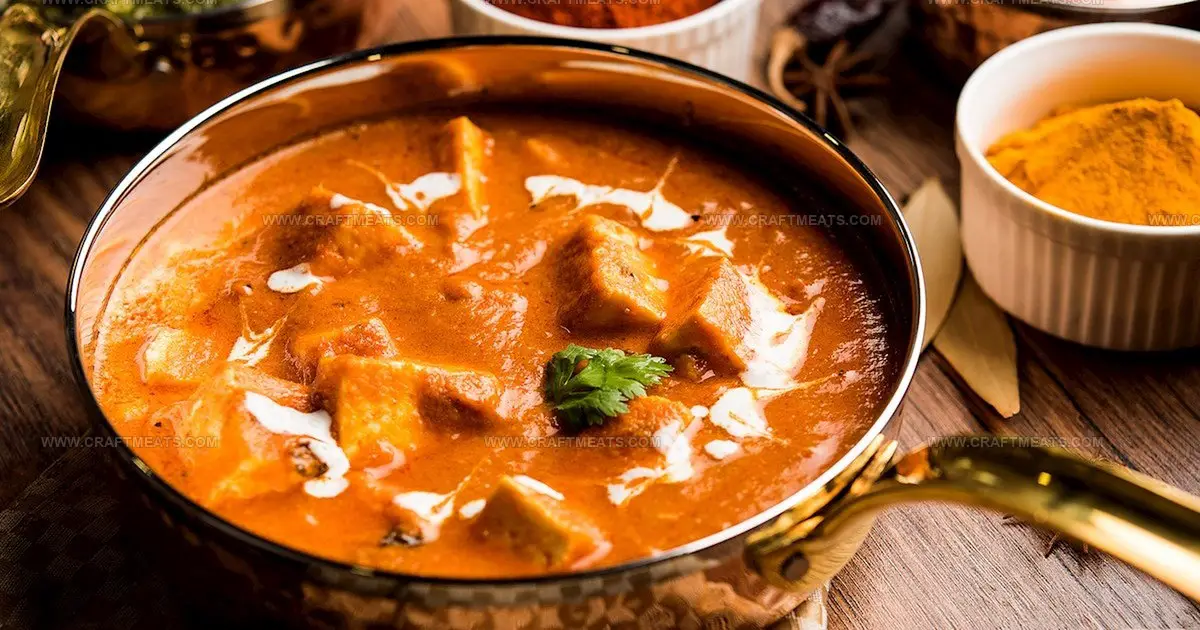
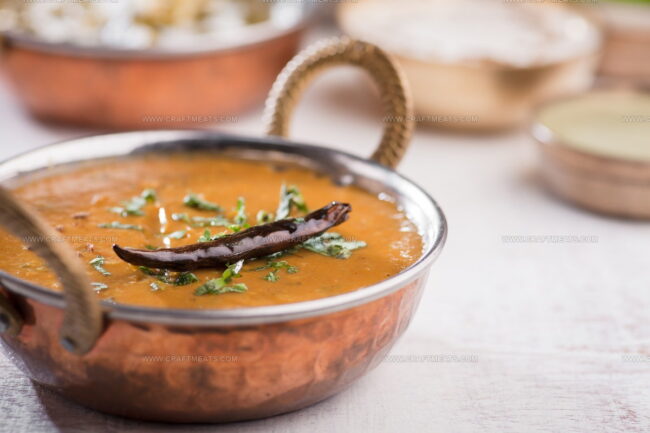
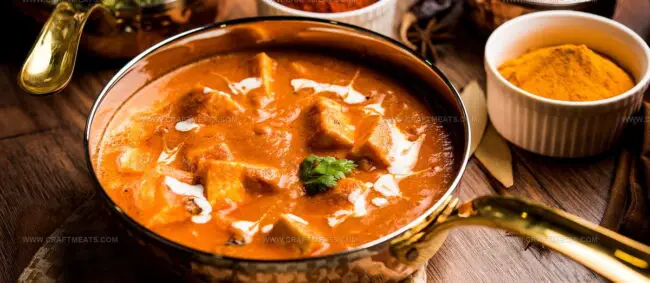
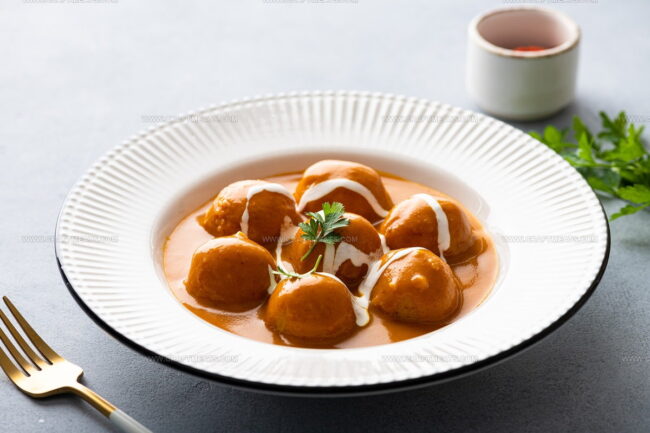


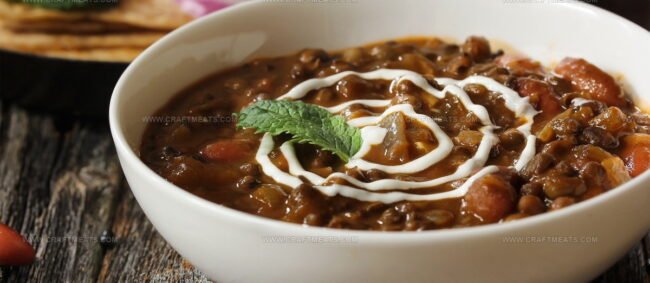
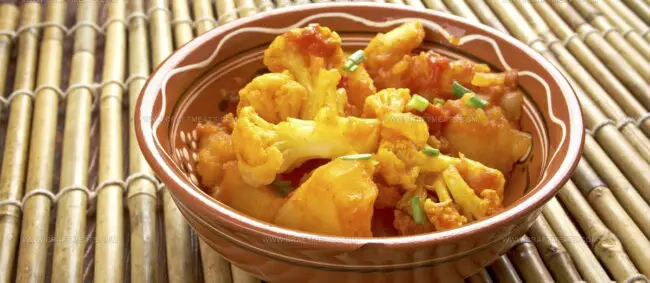
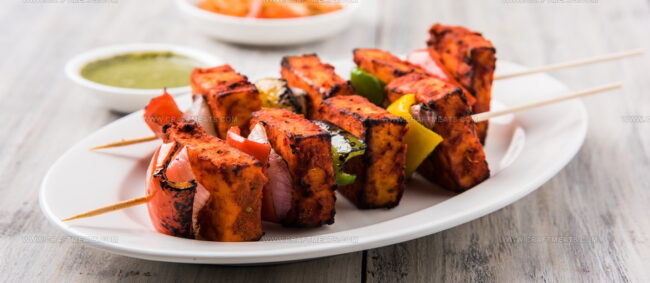

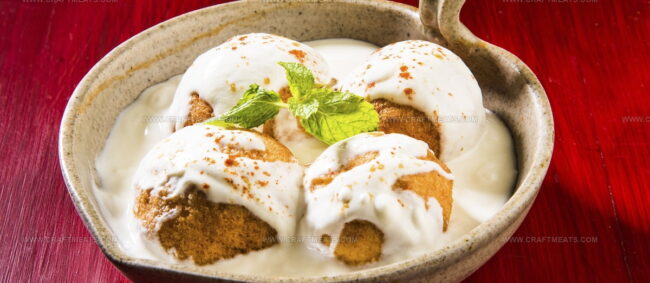
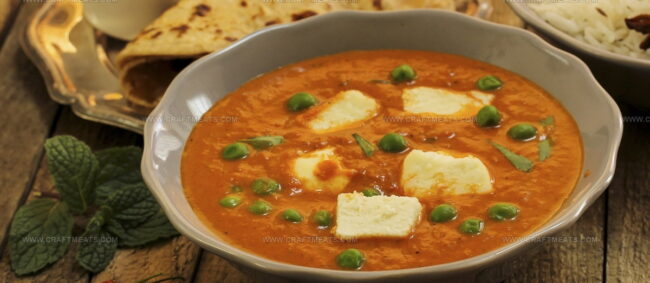
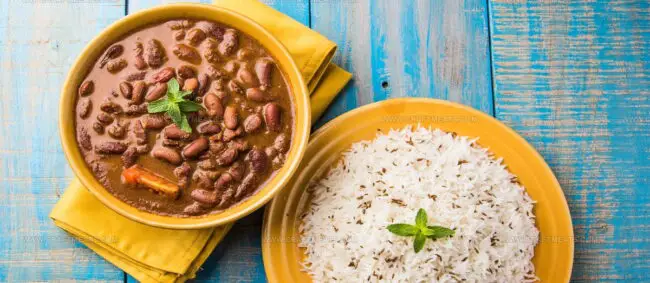

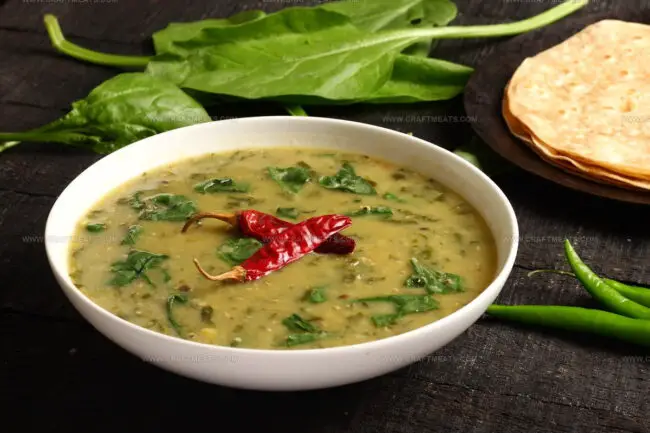
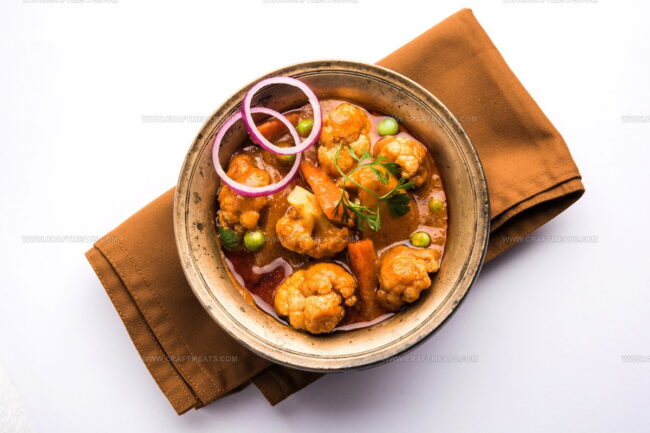

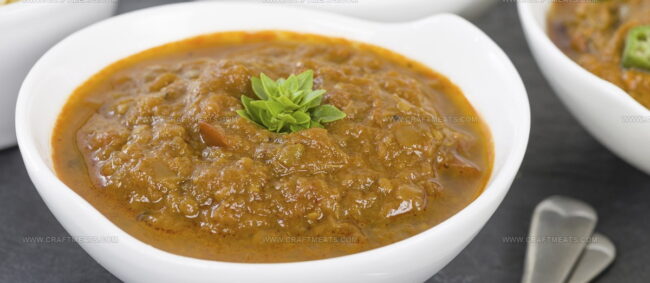
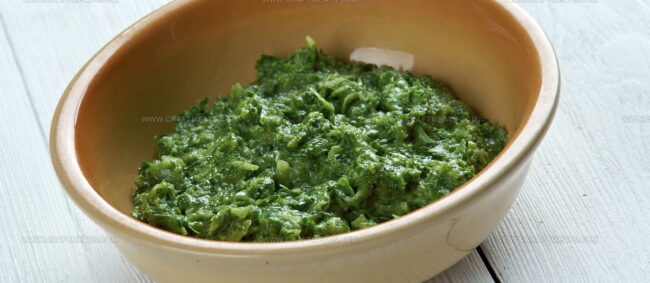
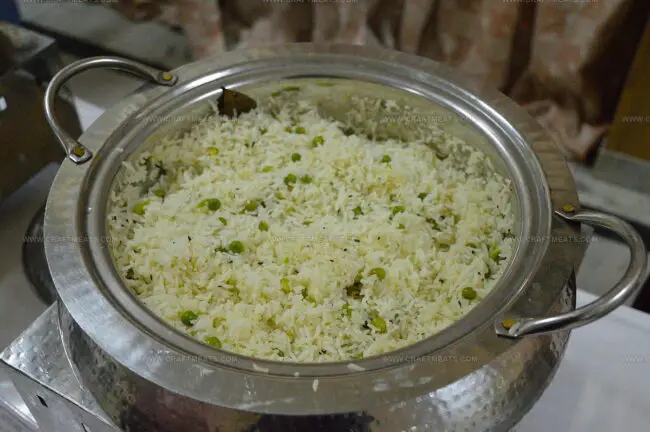
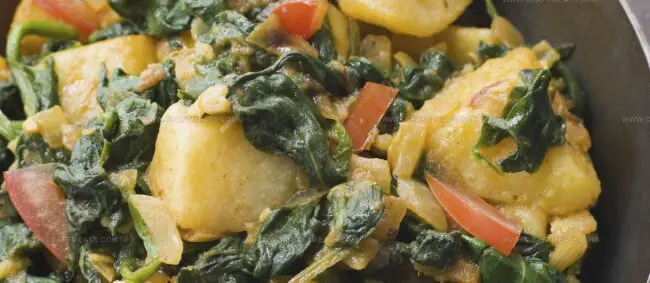

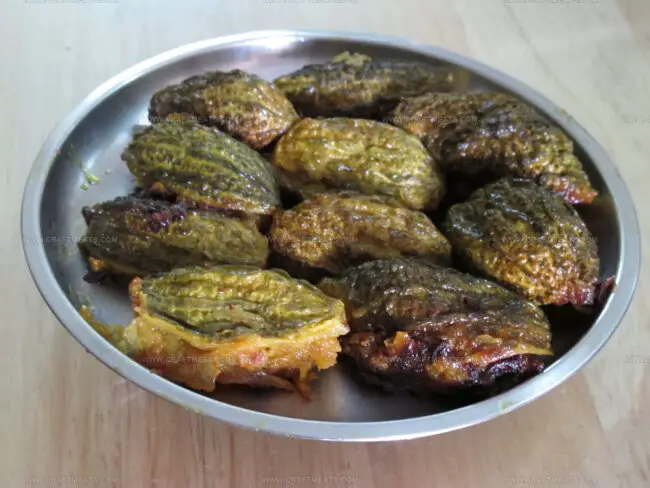
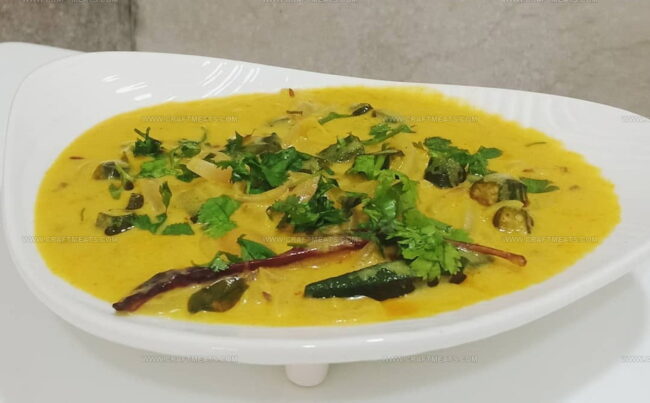
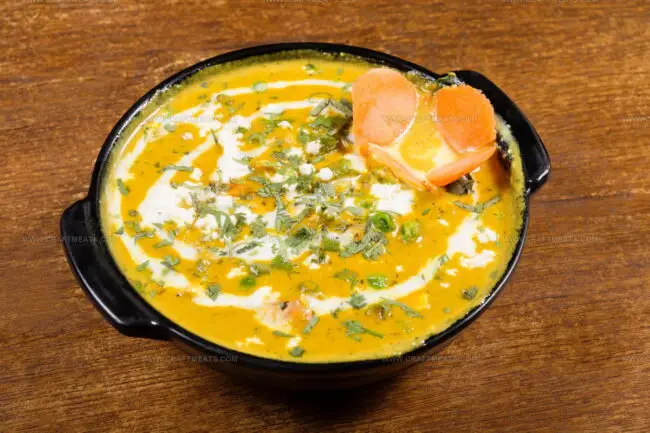

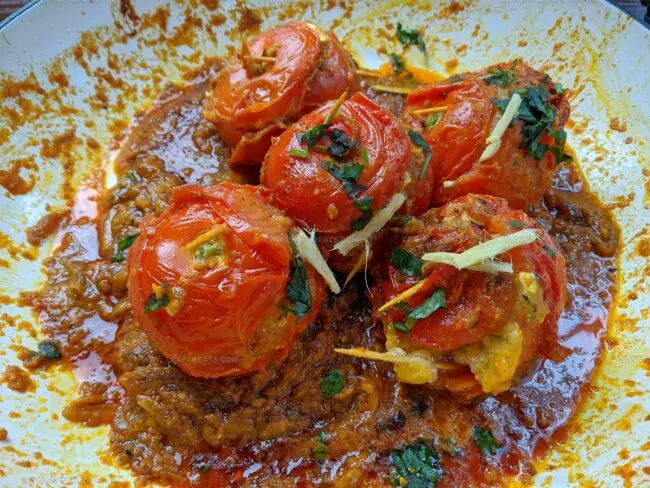
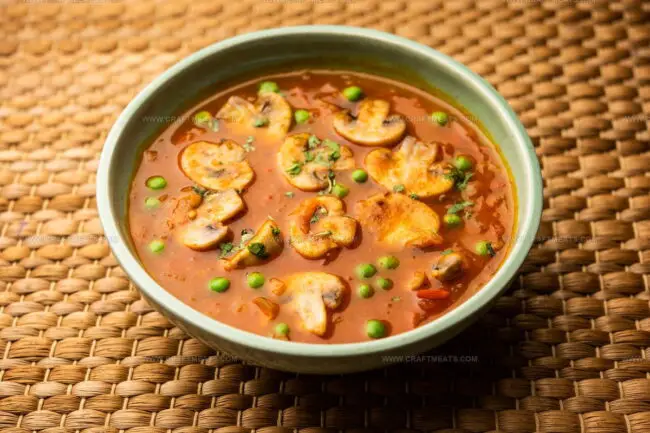

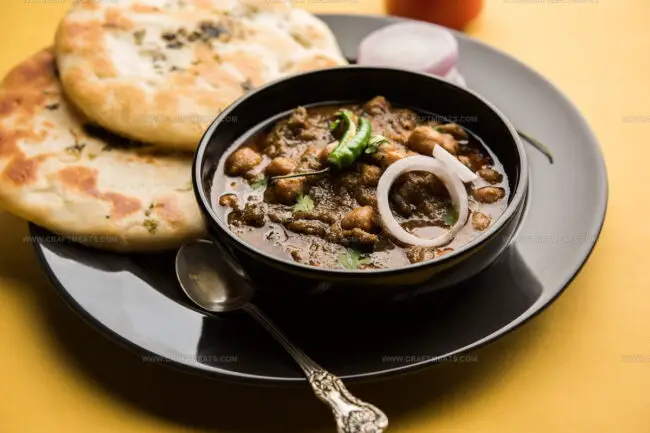

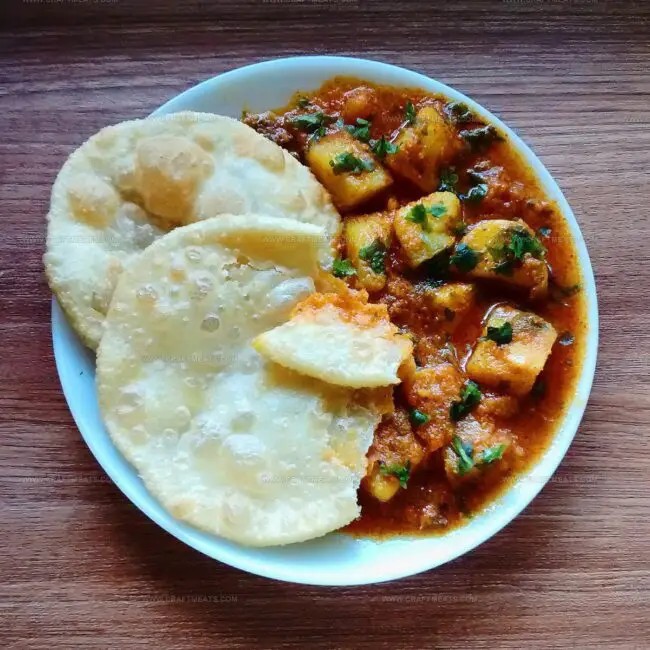
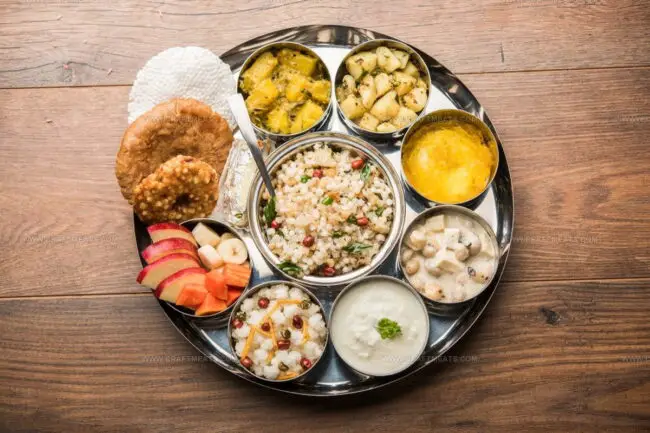
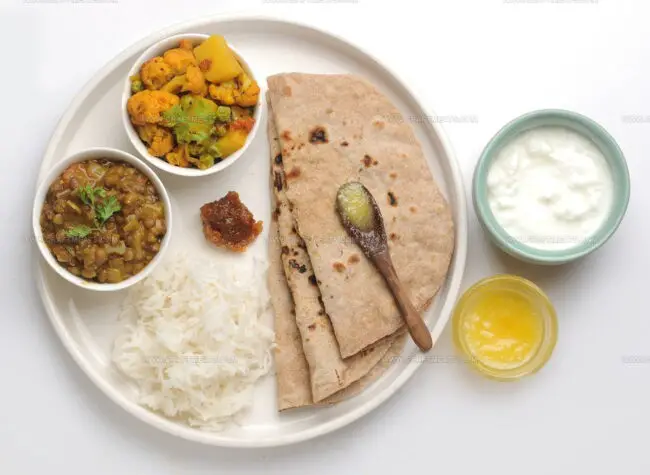
Isabella Rossi
Founder & Culinary Content Creator
Expertise
Recipe Development, Traditional Irish and European Cuisines, Food Styling and Photography, Culinary Education
Education
Dublin Institute of Technology (DIT) – School of Culinary Arts and Food Technology
Ballymaloe Cookery School
Liam is the voice behind many of Craft Meats’ most flavorful features. With roots in Dublin’s smoky barbecue scene and a culinary degree from the Dublin Institute of Technology, he brings time-tested cooking techniques to life.
His training at Ballymaloe Cookery School sharpened his farm-to-table approach, giving him a deep respect for every ingredient he writes about.
He’s not about overcomplicating the process, just helping you cook meat that’s worth talking about. When he’s not writing or grilling, he’s out foraging or nerding out on regional spice blends to add to his next recipe.